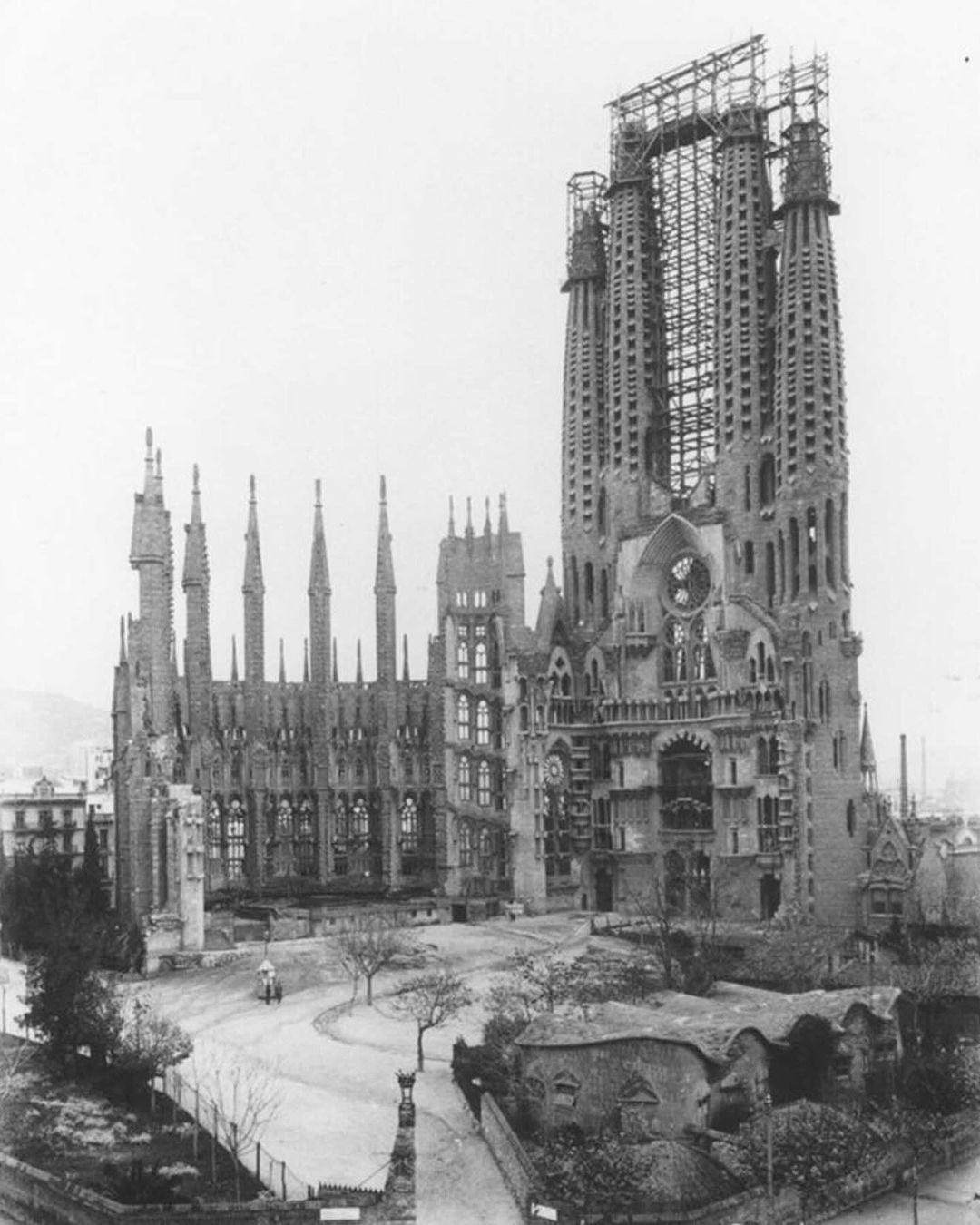An Immortal, Unfinished Magnum Opus
The Evolution of La Sagrada Família by Antoni Gaudí
Currently, the world's longest-running construction project, Spain’s most famous church has had a very long and tumultuous history. In Barcelona, Antoni Gaudí began work on his magnum opus in 1883, where he first focused on the crypt of the church, and after that, he spent most of his life dedicated to the Nativity facade. Since Gaudí was both a sculptor and an architect he became heavily focused on the biblical scenes depicted in the nativity facade.
In 1926, 73 year-old Gaudí was hit by a tram and thousands of people mourned his death in the streets. He left behind an almost completely unfinished church, consisting of the nativity facade, the crypt, and one bell tower. His models and structures left behind were the only thing his team had left to base the construction on. In 1936, during the Spanish Civil War, a group of anarchists broke into the studios of Gaudí, smashed his models, and burned the architectural drawings. As an attempt to attack Catholicism during the war, these anarchists attempted to bomb the Nativity facade but failed.
For the next few decades following the war, architects argued over how to continue Gaudí’s work. Famous architects including Le Corbusier and Alvar Aalto, publicly opposed the continuation of La Sagrada Família. They argued that Gaudí wasn’t only an architect, but an artist whose work should be left as it was.




